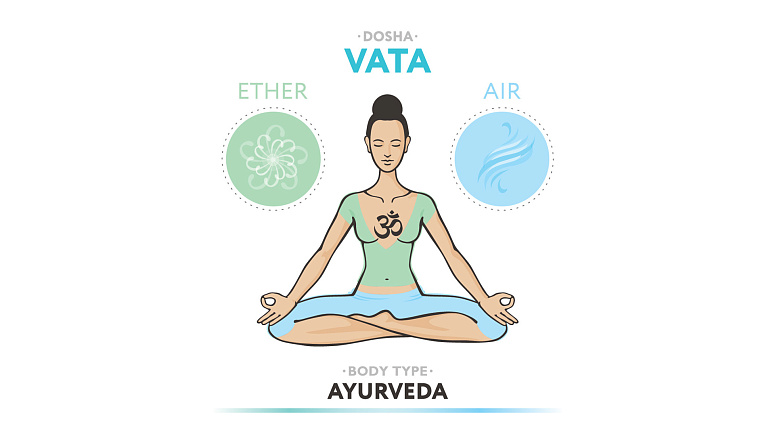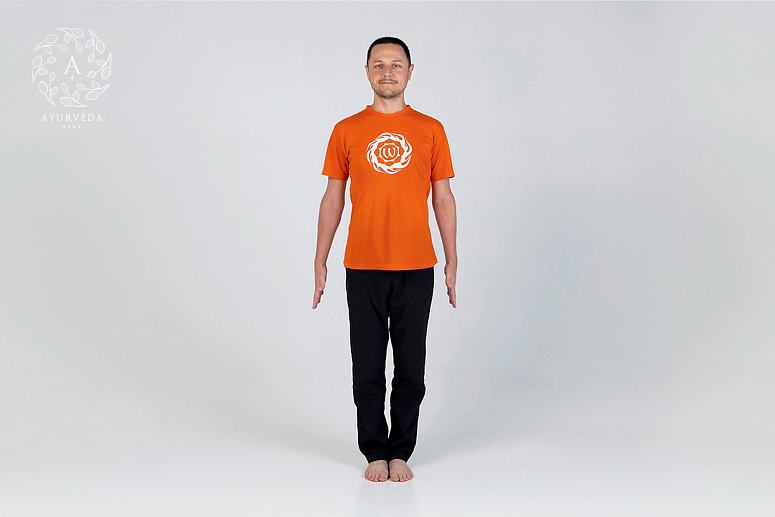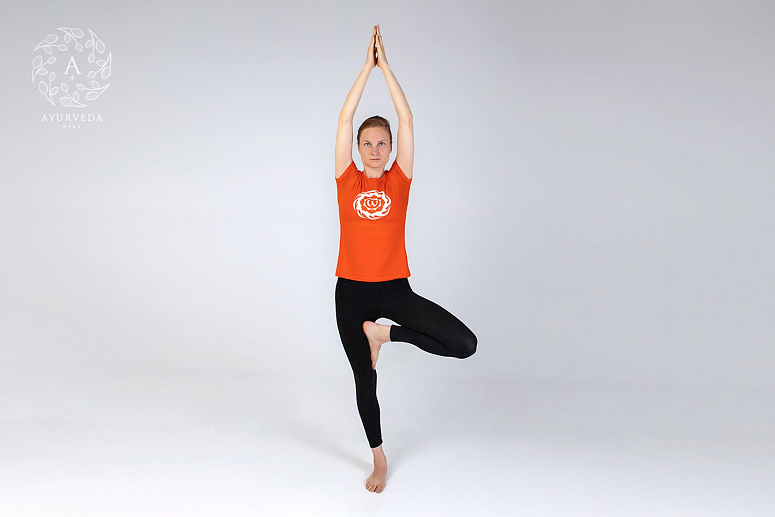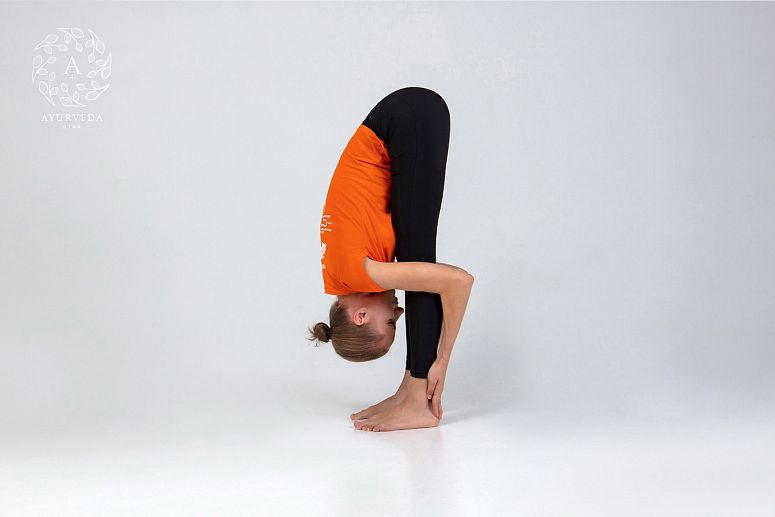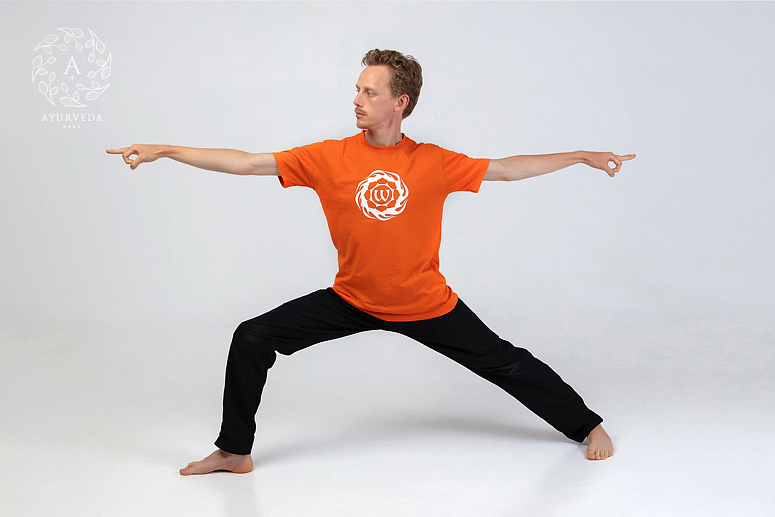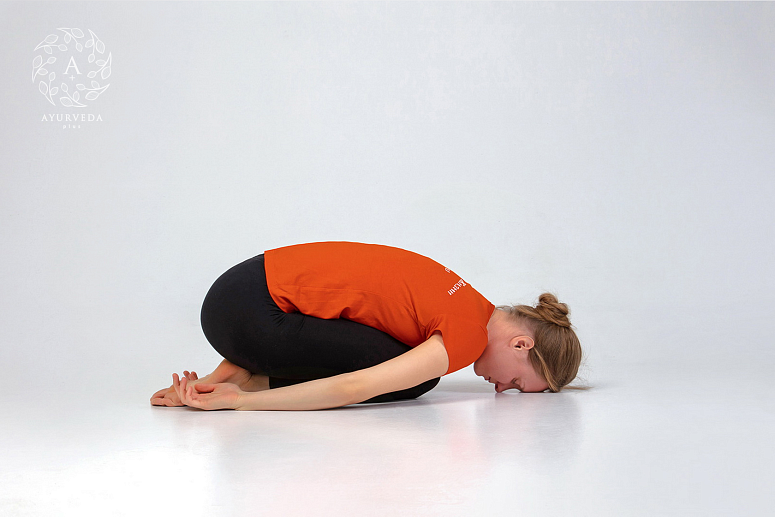People with Vata constitution are mobile, impulsive, and fast. Moderation, concentration and calmness help them to maintain balance. Therefore, yoga practice for Vata people should be calm and balanced. In this article we will review the most appropriate yoga practices for people with Vata constitution.
During the cold and windy season, people with a predominant Vata dosha should pay special attention to their health. Vata represents the primary element air and is characterised by coldness, dryness, and mobility. When these characteristics are prominent both internally and in the surrounding environment, the amount of Vata increases drastically. Thus, Pitta and Kapha are displaced by Vata, which undoubtedly leads to imbalance.
To balance the doshas in the body, Ayurveda recommends following a certain diet as well as yoga practices such as asanas, pranayama, and meditation.
General recommendations
If Vata is dominant in your constitution, pay attention to the following recommendations:
- avoid intense exercises in favour of regular exercises, it is better to practise an hour every day than three hours two times a week;
- favour calm practices, perform asanas slowly, at a measured pace, and without undue tension;
- pay attention to grounding, feel how your feet and palms connect with the mat, how hard the floor is, and how your fatigue after the practice goes into the ground;
- prepare a warm and comfortable space with dim lightning for practising yoga;
- when practising, concentrate on the present moment, monitor your breathing, and listen to your sensations and your body’s reactions leaving your thoughts away for later.
People with Vata constitution tend to be agile, impulsive, and fast, so, in order to maintain balance, they should bring regularity, focus and calmness into their lives.
Asanas for Vata dosha
Warm-up and standing poses are beneficial for Vatas, because they help warm up the body and stabilise the impetuous dosha. It’s also beneficial to include balance asanas in your practice as they help with concentration and grounding, as well as asanas targeting the pelvis and hips, the area where Vata accumulates most.
Exercises for Vata dosha can include almost all known asanas, as long as two rules are kept in mind:
- asanas should be performed slowly and gently, the movements should be calm, smooth, and flowing;
- hold each pose for a short period of time and, if necessary, repeat it multiple times to increase the load instead of holding it for a long time, because people with a dominant Vata dosha quickly exhaust themselves.
The following asanas can be used individually or in a sequence.
Attention! Do not include asanas in your practice if it’s not clear how to do them properly. Seek more information and, if possible, consult a yoga teacher or an experienced yogi to understand all possible variations and start from the basic one.
It is important to remember that while performing asanas, you should not feel pain; only a slight discomfort and pleasant tension in the muscles are acceptable .
Tadasana (mountain pose)
Technique:
- Stand up straight, put your heels together, legs are strong, hip muscles are engaged, knee caps are lifted up, and body weight is evenly distributed on the feet;
- toes are spread as wide as possible and thumbs are touching each other;
- Lengthen your tailbone toward the floor, pull your abdomen slightly in, straighten the back, lengthen the crown of your head toward the ceiling, feel the tension of the muscles in the sacrum area;
- shoulders are rolled down and back, while arms are parallel to the body; point your fingers downwards;
- stand like this for a while, keeping even, calm breathing and concentrating on lengthening upwards from the feet to the top of the head.
Feel all four corners of your feet touching the matt and imagine roots growing out of your feet and going deep into the ground. Make sure your face and eyes are relaxed, your shoulders are down and away from the ears, and the crown of your head is lifted up.
Vrikshasana (tree pose)
Technique:
- stand in Tadasana;
- place the right foot on the inside of the left thigh, toes of the right foot are facing downwards, heel is pressed against the groin;
- bring the right knee as far to the side as possible, tuck your tailbone in slightly while keeping your pelvis from moving backwards;
- feel the balance and join your hands in front of your chest; if you feel confident in this pose, without separating your hands, extend them above your head;
- stand in the pose for a few breath cycles and then straighten the right leg and do the same on your left leg.
Focus : lookat a fixed object. Try to identify yourself with a tree and feel how firmly the ground holds you. Feel stability and calmness.
Uttanasana (stretching pose)
Technique:
- stand in Tadasana;
- exhale and bend forward, folding down at the hip joints;
- depending on your flexibility, place the palms of your hands behind your feet on the floor, on your heels or on your shins;
- press your stomach against your thighs and extend the crown of your head towards the ground making sure your neck remains relaxed;
- if the asana is not yet mastered completely, bend your legs slightly; it is important to feel the stretch in the backs of your thighs, but never in the lower back;
- hold this pose and then slowly return to Tadasana.
While in Uttanasana, feel your belly resting on your thighs as you inhale and concentrate on this sensation.
Virabhadrasana (warrior pose)
Technique:
- stand in Tadasana; then step backwards with the right foot, toe of the right foot is facing forwards;
- turn the right foot to the right at about 45 degrees, pressing the outer edge of the foot into the floor;
- exhaling start to bend your left knee till the left thigh is parallel to the floor, the shin of the left leg is perpendicular to the floor, the left knee forms an angle of 90 degrees or more, and the back leg (right) remains straight and strong;
- distribute your weight evenly and feel the balance in this posture; if it is difficult, return the right foot to the position with the toe facing forward, lift the heel off the floor and rest on the toes;
- make sure the right leg (back) is engaged, the right knee is lifted up, and the front knee (left) is not dropping in or going too far past the front toes;
- keeping your legs strong, extend your arms out to the sides s and up until your palms meet in a prayer-like position above your head;
- lengthen your arms and head upwards, lift your gaze and lower your shoulders;
- engage your abdominal and pelvic muscles and thus stretch upwards more;
- exhaling lower your arms, return to Tadasana and do the same for the other side.
Make sure that there is no pain in the knees and the pelvis is turned forward. Focus on the tension in the leg muscles.
Balasana (child's pose)
Technique:
- bend your knees, place the big toe of one foot on the big toe of the other foot, and keep your heels slightly apart;
- press your ankles to the floor and lower your pelvis into the bowl formed by your feet;
- make sure that your knees are in contact with each other; if this posture causes pain in the knees, separate them slightly;
- exhaling bend your body towards your knees, lower your belly to your thighs and your forehead to the floor;
- keep your pelvis on your heels;
- take your hands back and place them along your legs with your palms facing upwards;
- relax and stay in the posture for as long as you feel comfortable;
- as you inhale, return to the home base pose.
Relax and just let yourself be in the pose. Allow your breath to deepen and flow freely. Notice how your mind calms down and the body relaxes.
Viparita Karani mudra (inverted candle pose)
Technique:
- use the wall for the basic version;
- place the mat on the floor by the wall and sit with your right or left side against the wall;
- lie on your side, press your buttocks against the wall, then roll onto your back and put your legs up against the wall;
- place your arms loosely along your body, lengthen your head away from the wall and your heels upwards;
- relax and breathe through your belly;
- finally, bend your knees, push off the wall and move along the mat until your feet are completely on the floor;
- don't get up right away, rest in this pose, or better, lie down into Shavasana.
Stay in the pose until you get tired or your legs start to feel numb. Concentrate and feel the weight in your legs and pelvis area, feel the blood moving away from your feet to the abdomen.
Pranayama and meditation
Start your practice with a warming and grounding pranayama such as Bhramari (bee buzzing), Nadi shodhana or Anuloma viloma and then move on to a grounding, structured and focused meditation such as breathing meditation. Concentrating on inbreaths and outbreaths calms the mind down and reduces excess of Vata in your body.
Stay healthy! Om!
